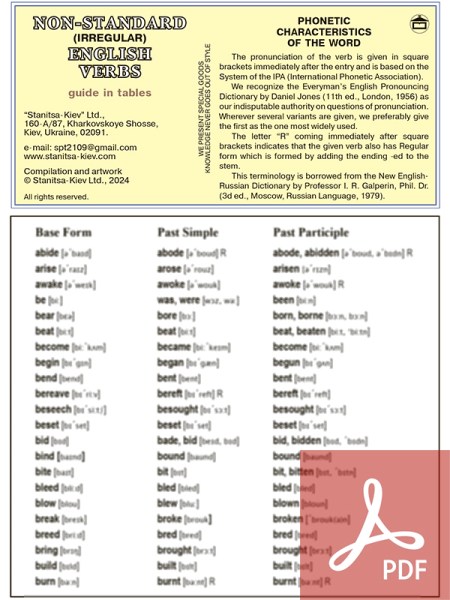
The Table of Irregular (non-standart) English Verbs (EN)
The Table of Irregular (non-standart) English Verbs is an indispensable teaching tool for anyone interested in the basics of English Grammar.
In English the verbs are divided into regular (standard) and irregular (non-standard) verbs according to the way of their basic forms composition. The regular verbs obtain their 2nd form (Past Tense) and 3rd form (Past Participle) by adding the ending -ed to the stem. The irregular verbs form their main forms in a differrent way. Most of irregular verbs are the verbs whose vowel in the stem is changed, e.g. sing – sang – sung. Another big group of irregular verbs are the verbs whose final consonant d is changed for t, e.g. build – built – built. Some irregular verbs are the verbs which do not change, e.g. put – put – put. Quite a small number of irregular verbs end with t, e.g. burn – burnt – burnt. Finally, two irregular verbs form their 2nd and 3rd forms from different stems, e.g. go – went – gone; be – was; were – been. There are also irregular verbs that form their basic forms both standardly and non-standardly. In the manual the letter R (regular) located after square brackets indicates that the given verb forms its 2nd and 3rd form by adding the ending -ed to the stem.
In English the group of irregular verbs counts around 200. Although some sources indicate that the number of irregular verbs reaches up to 470, but only about 180 of irregular verbs are frequently used.
This guide contains 166 of the most common irregular verbs.


